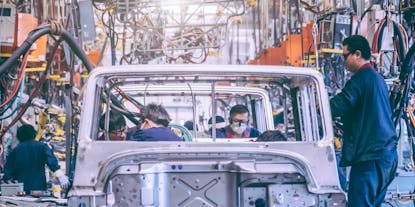Jobs & Careers
Jobs & Careers: Practical Advice to Pursue Your Work Goals
Are you just entering the workforce and still deciding what job or career to pursue? This can be an understandably confusing and tricky decision to make.
Perhaps you're thinking of becoming self-employed but you're not sure where to start?
Maybe you've been working in a particular industry for several years but are looking to embrace a career change.
You might be seeking guidance on jobs that would suit a specific personality type. Alternatively, you might want job options that will work around existing commitments such as studying or childcare or a side hustle to pursue additional income on top of your current job.
We offer a wide range of insightful articles on all of the above and more to help you successfully navigate the working world. So whether you're after guidance on starting your own business, looking to define your long-term career goals, searching for information on employment laws or looking for tips on finding your ideal job, you'll find a wealth of practical advice below.


























